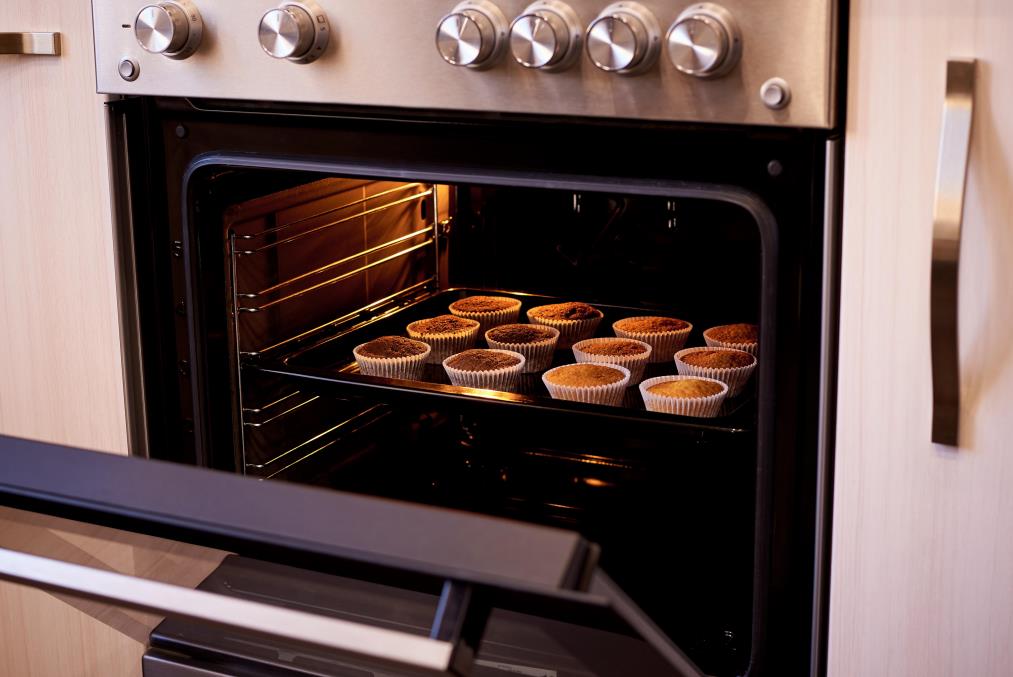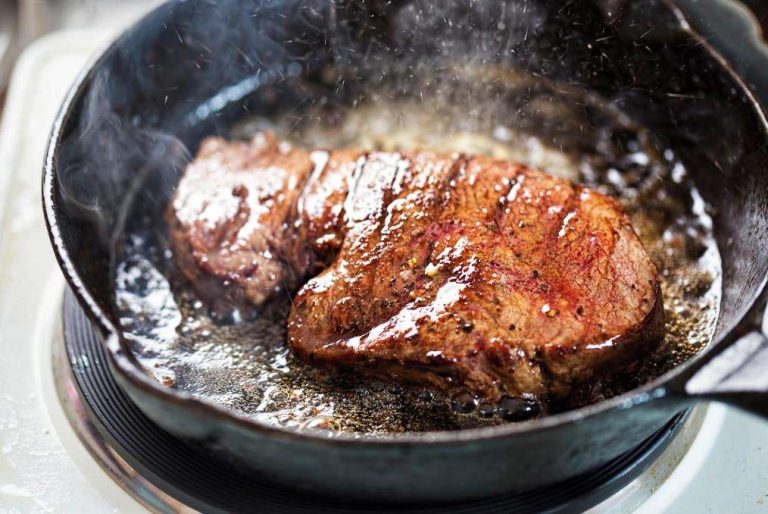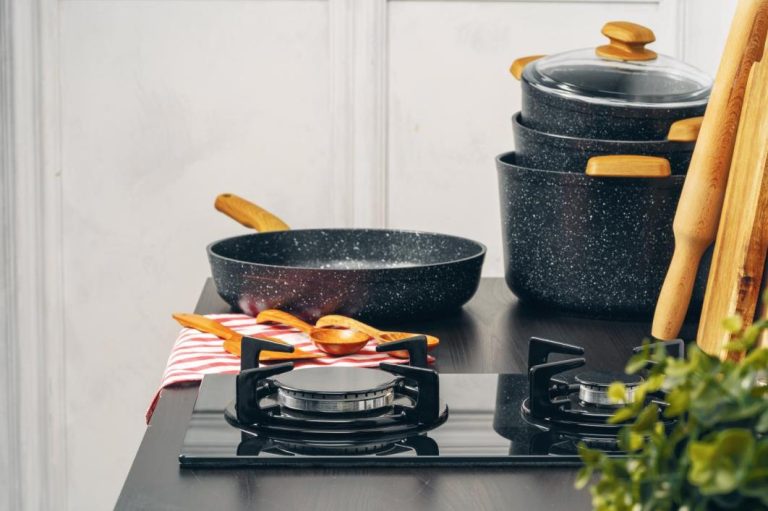Cast iron skillets or pans are popular with cookware buyers today, both professional chefs and home cooks. They’re eminently durable, hold heat wonderfully, and are oh-so-versatile: moving seamlessly from baking cornbread to conjuring up flawless burgers and steaks.
Robust, and with a comfortable heft in the hand, the cast iron skillet is a kitchen utensil many of your customers will own. So let’s explore this cookware item in more detail.
Can your customer use a cast iron skillet in the oven? And how does that work? Let’s answer that question and cover some skillet tips and FAQs too!
Can a cast iron skillet be used in the oven?
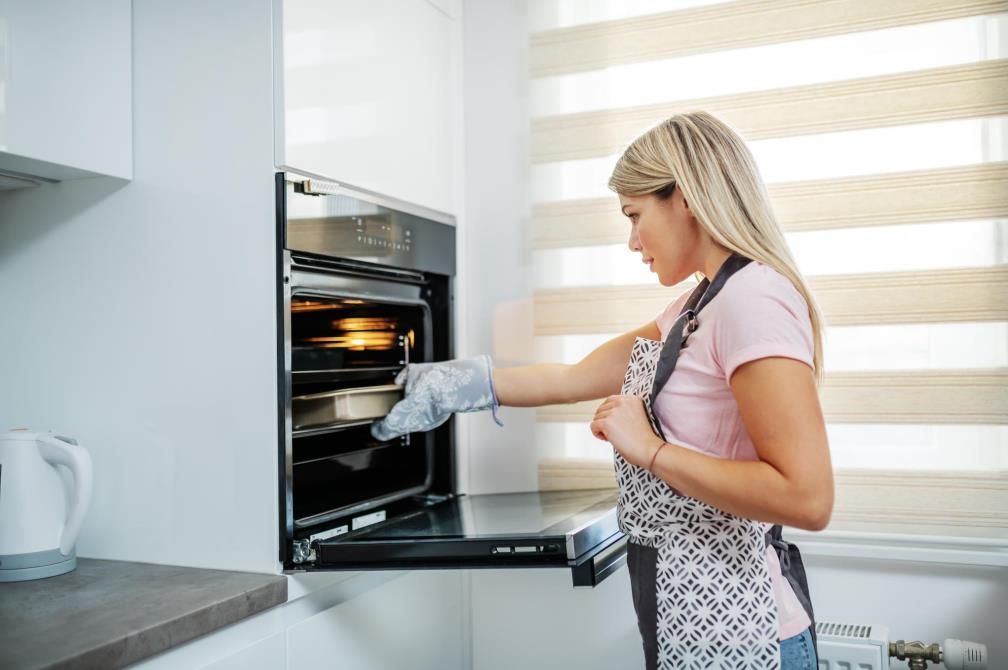
Absolutely.
Cast iron is highly adaptable and a cast iron skillet can be moved straight from an outdoor fire grill or a stovetop into the oven, no problem.
Note that we’re talking about plain, unenamelled cast iron here, which can handle temperatures far above that which a regular oven will produce.
Also, it must be noted that cast iron itself is safe at oven temperatures, but if the skillet handle is made of another material such as a thermosetting resin or wood, the handle will not be oven-safe and customers should be made aware of this.
Can enameled cast iron go into the oven?
In skillets and other cookware, enameled cast iron is another popular choice and is oven safe to temperatures of up to around 400 or 500 degrees Fahrenheit, depending on the manufacturer.
Whatever the brand of enameled cast iron, the manufacturer’s usage instructions should be followed, as excessive temperatures can cause cracks or chips to an enamel coating.
Buy Wholesale Cookware and Start Scaling up with Us Today
Contact us and connect with a sales rep to get a free quote.
A handy guide to oven-safe cookware
The table below features cookware of different materials, whether or not it’s oven safe, and the maximum recommended temperature for safe usage.
| MATERIAL | OVEN SAFE? | MAXIMUM TEMP |
| Cast Iron | Yes | ±700°F |
| Enameled Cast Iron | Yes | ±450°F |
| Stainless Steel | Yes | ±500°F |
| Carbon Steel | Yes | ±800°F |
| Non – Stick/Teflon | Yes | 350°F – 500°F |
| 100% Ceramic | Yes | ±2000°F |
| Pyrex | Yes | ±450°F |
| Tempered Glass | Yes | ±350°F |
Note: Specific cookware brands will vary, so usage directions must be followed.
Generally, it’s unwise for users to move cookware from fridge cold to oven hot immediately, this can cause thermal shock and some cookware will crack or even shatter. Cookware that’s been in the fridge must be allowed to come up to room temperature before it’s put into a hot oven.
That works the other way around too, hot cookware from an oven or stovetop should never be put straight into the fridge. The high heat can cause cracking to glass fridge shelves. The cookware should be allowed to cool to room temperature, then moved into the fridge.
Caring for cast iron skillets
Seasoning
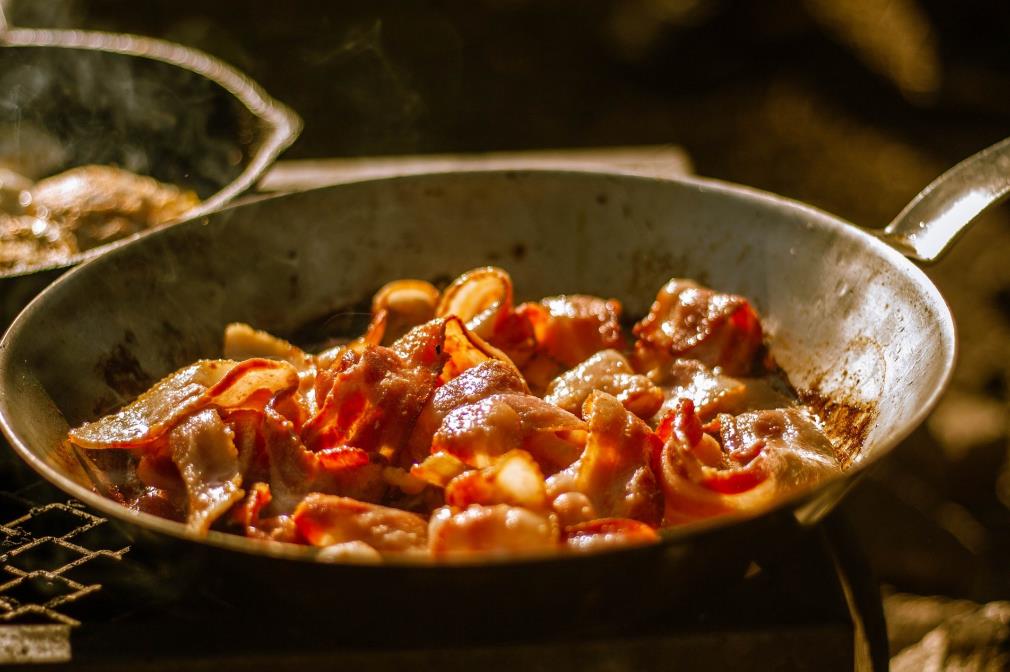
You can’t mention cast iron without mentioning seasoning!
Seasoning treatment fixes a layer of polymerized oil onto the skillet’s surface, this protects the finish and makes the skillet non-tick , essential for your customer.
Some skillets will be seasoned prior to purchase; some skillets will need to be seasoned by the buyer.
Guide your customer to:
- Wash the skillet with warm water and mild dish soap, rinse, and dry thoroughly.
- Rub the skillet inside and out with a layer of cooking oil – flaxseed or canola oil is recommended.
- Wipe off excess oil with a paper towel.
- Place the skillet upside down on a middle rack of an oven and place a baking sheet or foil layer on a bottom rack to catch any oil drips.
- Bake the pan in the oven at 375° Fahrenheit for 1 hour.
- Allow the pan to cool completely, then give it a wipe down with a paper towel and store.
Note: Some cast iron experts insist that a new skillet should be seasoned at least 3 times before use to build up a good layer of oil, this is an individual preference and is affected by the skillet’s particular specifications.
Washing
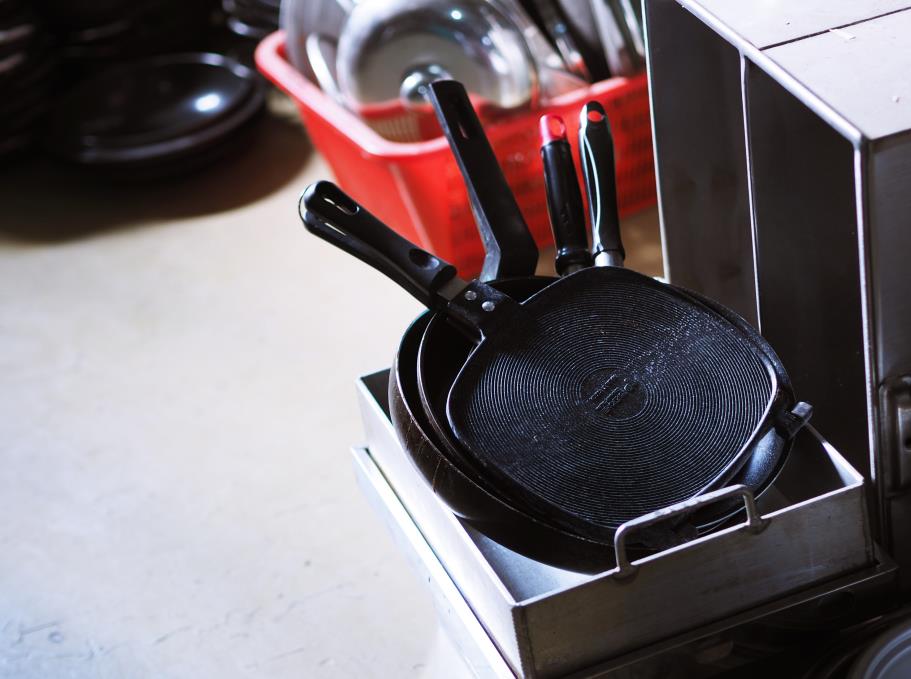
Cast iron skillets can only be hand washed, never put into a dishwasher. The very hot water and caustic detergent of a dishwasher will strip off the skillet’s seasoning and leave it vulnerable to rust.
A skillet should be hand washed soon after use with mild/natural dish soap only and dried thoroughly after washing.
For best results, skillets should be washed soon after cooking while still warm, as food residues will be easier to remove.
For stuck on food, salt can be recommended as an effective yet gentle abrasive. The salt is simply poured over the dried on food and rubbed gently to loosen it.
Cooking
A cast iron skillet must be preheated, and oil or butter added before adding the food.
Acidic ingredients like vinegar or tomatoes will cause trace amounts of metal to leach into the food, and the food will taste unpleasant. So acidic ingredients and cast iron are not a good pairing!
Metal implements can be used with cast iron skillets, but the cook should avoid scraping at the pan’s surface. Wooden spoons are a far more delicate option.
Before the skillet is thoroughly seasoned and non-stick, users should avoid cooking very sticky dishes like caramel in it.
Storage
Cast iron skillets should be stored in a dry area away from steam/water.
If the space is well-ventilated, this will retard moisture build-up and protect the skillet’s surface too.
User safety
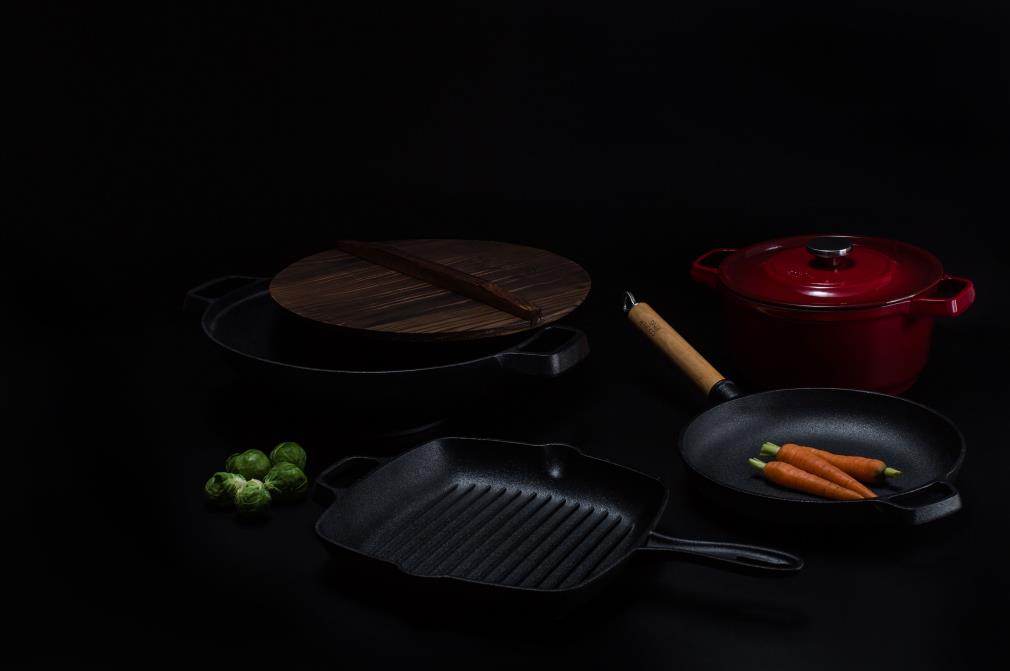
A cast iron skillet’s handle can get very hot – customers should be advised to always use a dish towel or oven mitt to touch the handle until the skillet has cooled down.
A hot cast iron skillet will also retain heat, so caution is needed until the skillet is handled!
A falling cast iron skillet is heavy, and users should not attempt to catch one as it falls – they could injure themselves or get burnt. In this situation, your customer should move away and let the skillet fall to avoid injury.
For customers with kids or animals, it’s best not to leave the handle of a skillet overreaching the stovetop.
A very hot pan pulled or knocked over by the inquisitive can result in nasty burns. Skillet handles should always be placed out of reach to avoid accidents like hooking on clothes.
Buy Wholesale Cookware and Start Scaling up with Us Today
Contact us and connect with a sales rep to get a free quote.
Cast Iron FAQs
In conclusion
Cast iron skillets are versatile and durable tools for your customer to have in their kitchen. We hope that this article has provided an informative guide for you to give professional skillet advice to your customers.
For other kitchen must haves, LeeKnives invites you to visit our desirable range of knives and knife accessories, for the trend setting buyer aiming for quality at a reasonable price.
Do keep visiting the blog, it’s packed full of kitchenware industry knowledge and retail advice, right at your fingertips. Contact us at any time if anything interests your eyes!
